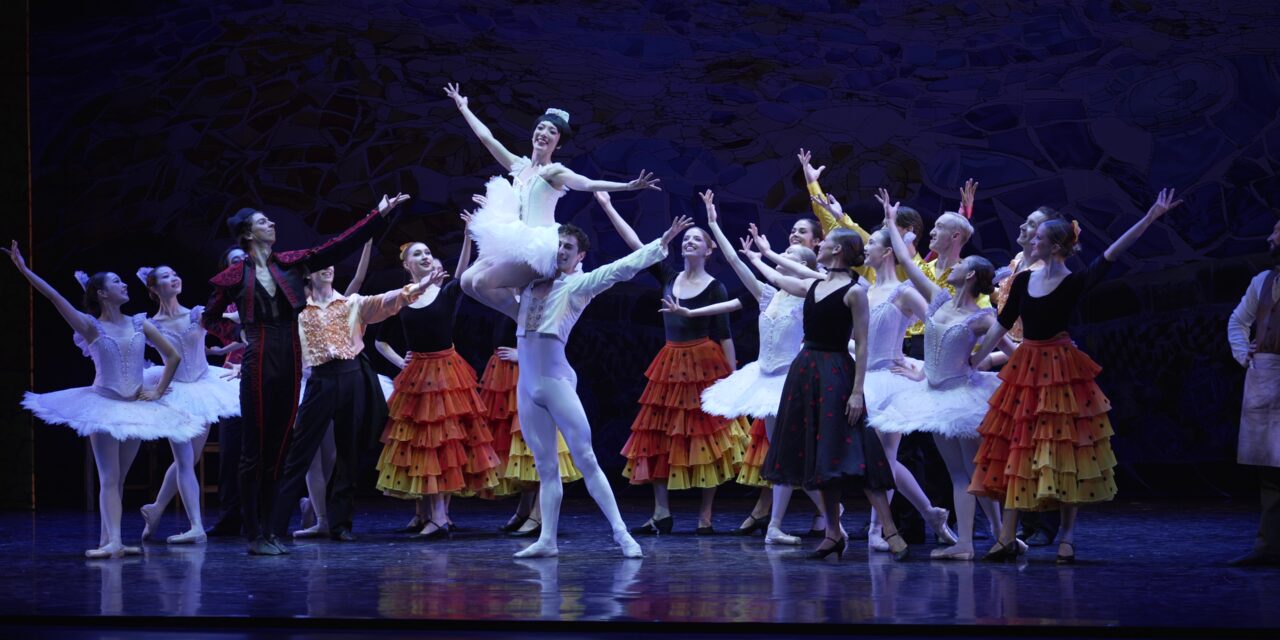Italian design creates a Spanish fantasy world
By Lauren Kalinowski
Under the amber glow of Edmonton’s Jubilee Auditorium on May 9, 2025, Alberta Ballet unfurled its season’s final offering: a Don Quixote so alive with colour and movement that it seemed to breathe alongside its audience. This was, without question, the most intoxicating performance of the season, a rapturous detour from balletic convention that still honored the exquisite technique and luminous personalities of its dancers.
One finds oneself returning to the memory of this production as one might revisit the ghost-taste of a perfect slice of birthday cake. Its crumb delicate as cloud-whispers, its fruit essence bright as morning light, its frosting a sweet revelation that never overwhelms but rather completes. Like such a perfect morsel, Ventriglia’s Don Quixote lingers on the mind’s palate weeks after the curtain falls, leaving an ache of longing for just one more taste, one more glimpse, one more moment within its enchanted world.
When the curtain first rose, revealing Italo Grassi’s Gaudí-inspired mosaic dreamscape of a Spanish plaza, the eyes were delighted at the beginning of true theatrical transportation. The air itself seemed infused with saffron and sunlight as the dancers burst forth, their movements creating invisible currents that pulled us irresistibly into their orbit.
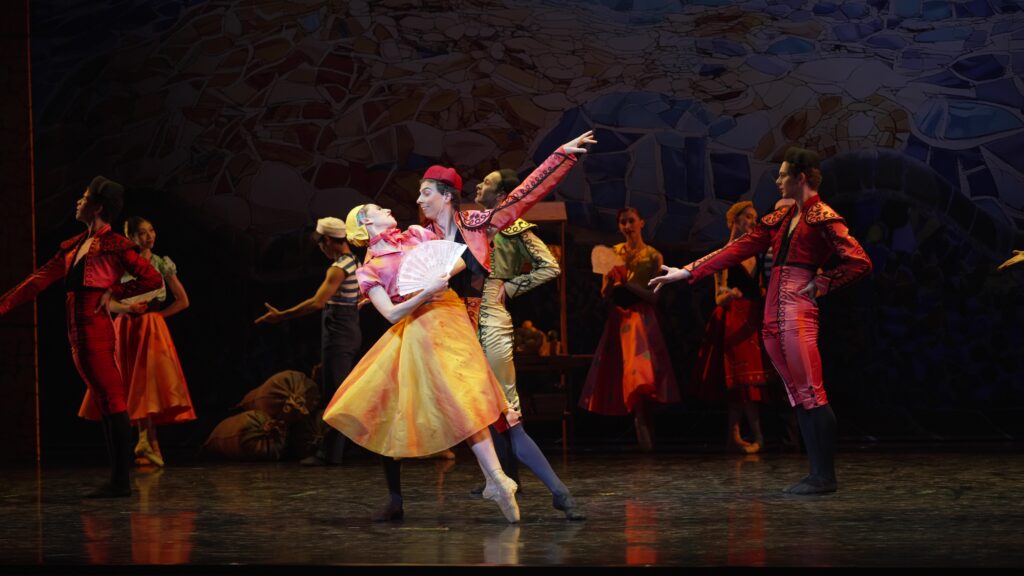
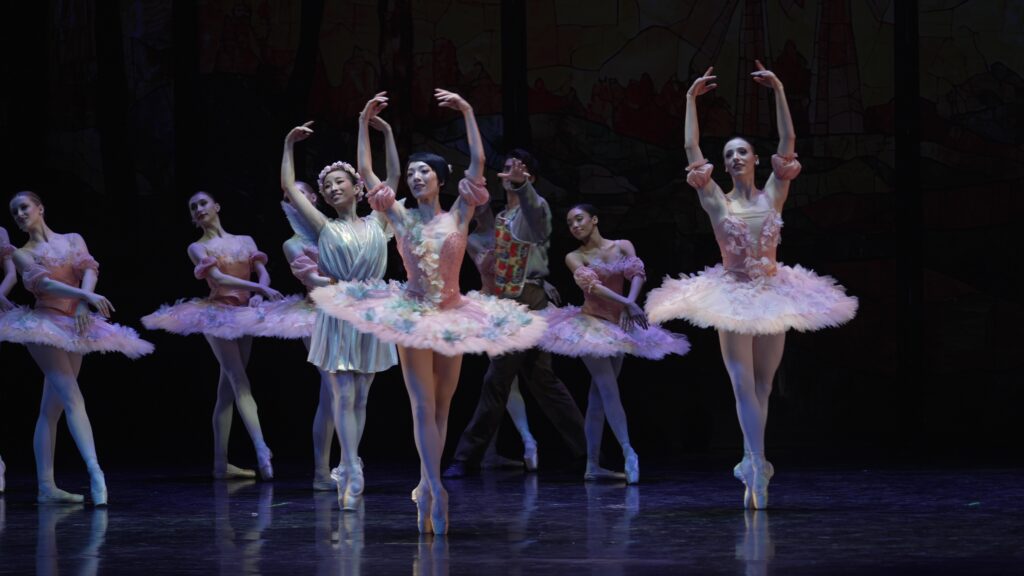
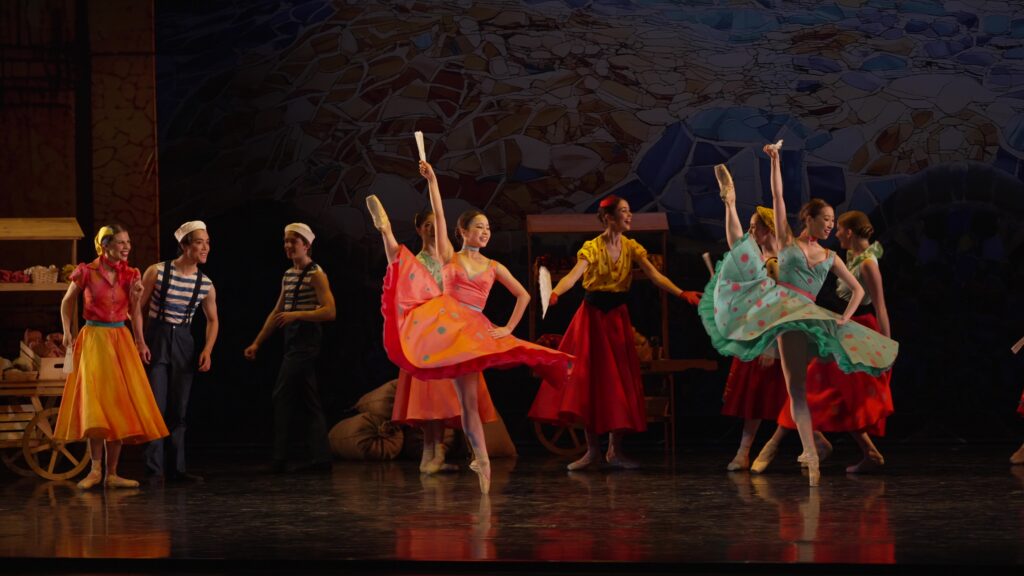
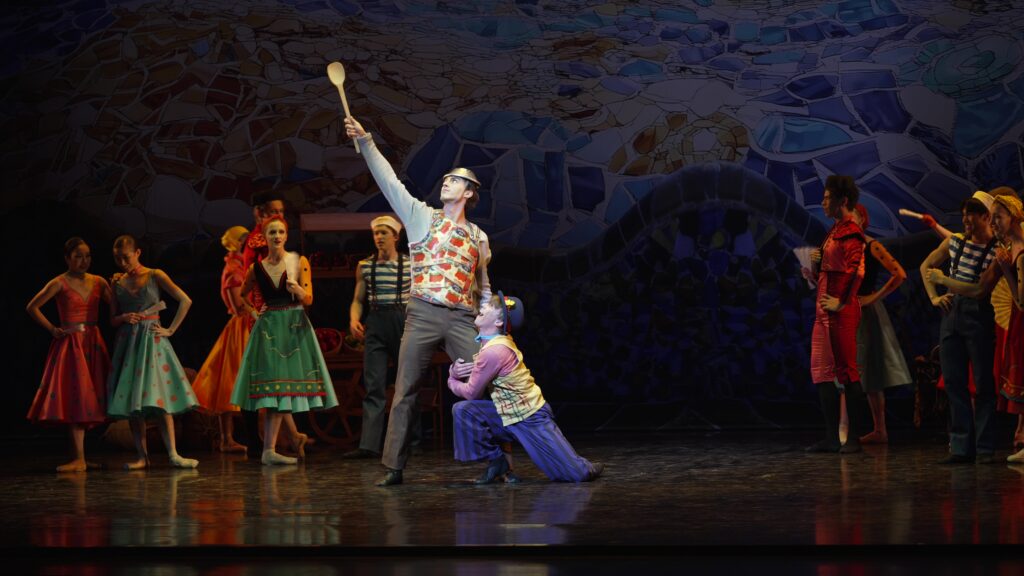
Luna Sasaki’s Kitri emerged not as a museum piece of classical ballet, but as flesh and blood and fire with her cropped hair catching the light as she spun, her every gesture ringing with the clarity of youth and defiance. Against her blazing center, Mirko Melandri’s Basilio orbited with masculine grace, his leaps suspended like momentary victories against gravity itself. Between them flowed an almost tactile chemistry, their bodies writing love poems in movement vocabulary too profound for mere words.
The production’s comedy arrived like bright splashes of cold water: shocking, delightful, and immediately invigorating. Scotto Hamed-Ramos transformed Gamache into a feast of physical absurdity, his red and white striped trousers flapping like carnival flags, his miming so precise one knew the thoughts rustling behind his expressive features. His performance reminded us of dancer Yaroslav Khudych’s observation that life “shouldn’t be taken too seriously,” a philosophy embodied in every carefully choreographed stumble and preening gesture.
Ventriglia’s theatrical imagination manifested in delicious visual surprises: Don Quixote’s armor fashioned ingeniously from tomato paste cans catching the stage lights; a live miniature horse pulling his cart; children transformed into puppet-people. The windmill scene unfolded like a fever dream, complete with a body-double inflatable Don Quixote tumbling from a blade in a moment of inspired theatrical trickery that sent chuckles through the audience.
But it was Gianluca Falaschi’s costumes that truly captured the essence of this production’s revolutionary spirit. The traditional Spanish silhouettes with their tiered skirts in sunset hues of marigold yellow, flamenco red, and blood orange billowed and snapped like flames around the dancers’ bodies. These were not the ethereal, withdrawn sylphs of traditional ballet but creatures of earth and passion, their three-quarter bodysuits revealing the muscular strength that makes such artistry possible. Against these, the dream sequence’s Dryads appeared in petal-pink tutus that seemed spun from dawn light and childhood fantasy, exactly as a little girl imagines a ballerina to be.
Hotaru Maryama’s Cupid in the dream sequence arrived like a mischievous sprite from a celestial plane, her arrows seemingly dipped in some divine elixir that intensified the already palpable attraction between our lovers. Her delicate footwork against the stage floor created a sound like whispered secrets, a counterpoint to the bolder rhythms that dominated the production.
The dancers moved through Ludwig Minkus’ spirited score as though the music flowed directly from their bodies. The notes propelled them through space with an invisible but undeniable force. Even when fatigue whispered at the edges of the final act—a barely perceptible softening of a landing here, a momentary quest for center there—the company maintained the narrative tension with the sharp, sassy attitudes of the female corps and the proud, chest-forward assurance of their male counterparts.
As the final notes faded and the curtain descended, one was left with the distinct sensation of having been transported to a dream of Spain, and to a heightened fantasy version of existence where emotions are purer, colors more vibrant, and movements more truthful than in our ordinary world. Alberta Ballet’s Don Quixote succeeded in creating that rarest of theatrical experiences. It was a performance that satisfies completely in the moment while simultaneously planting a seed of yearning that grows rather than diminishes with time.
Like that perfect wedge of birthday cake that becomes the standard against which all future birthday cakes are measured, this production lingers in the senses long after the taste has faded. It remains a luminous memory that nourishes the spirit and leaves one longing, weeks later, for just one more exquisite bite.

